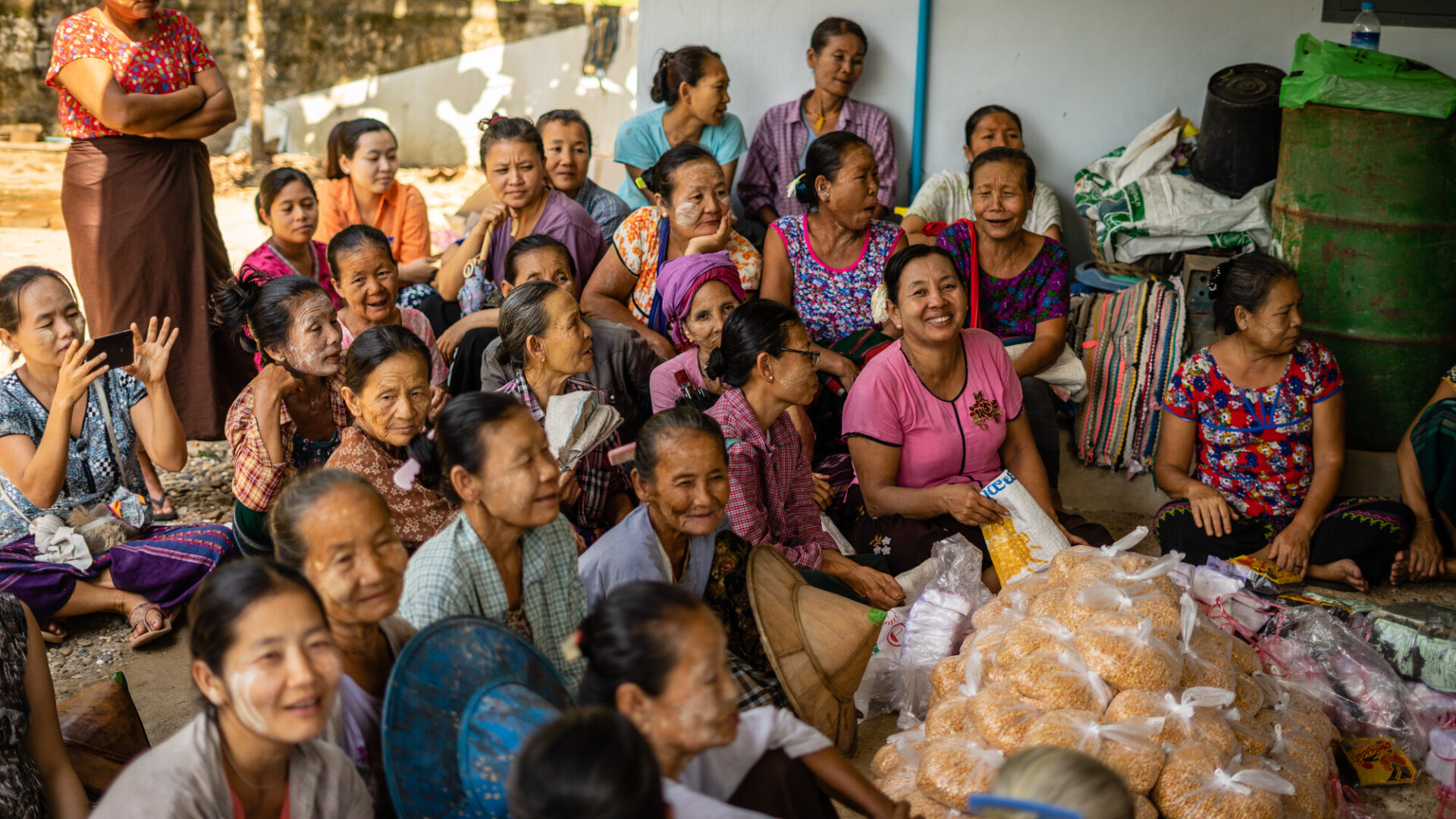Reaching those most in need
Between April and September 2025, AGE Myanmar reached thousands of older people affected by the disaster.
- 1,158 older people received multi-purpose cash assistance – surpassing the original target of 900 households.
- 908 older people received WASH, hygiene, and kitchen kits designed for ease of use by older people.
- 46% of all people supported were aged 80 or above, and 62% were women.
- 444 individuals (38%) had disabilities, most commonly related to mobility or vision.
Meeting urgent needs and restoring dignity
The cash assistance helped older people cover essential costs like food, medicine, and small home repairs. According to a post-distribution survey, 94% of respondents said the cash support was enough to meet their most urgent needs.
WASH and hygiene items were well received, with 97% of households using them regularly. Almost all participants shared hygiene tips with their family members, spreading good practices across the community.
Importantly, all older people who took part in the survey confirmed they received assistance safely and without barriers. Psychosocial support sessions provided by trained volunteers also had a strong emotional impact – most participants reported feeling calmer, more connected, and hopeful again.
Inclusion and protection at the heart of the response
AGE Myanmar made sure the response was inclusive and respectful of everyone’s needs. All data collected was disaggregated by age, gender, and disability to ensure no one was left behind.
Older people with mobility challenges received assisted collection and seating at distribution sites, helping them access aid with dignity and comfort.
Training played a key role in ensuring quality support. 103 volunteers and staff (60 men and 43 women) were trained in Psychological First Aid, inclusive communication, and safeguarding – far exceeding initial targets. After the training, 73% reported being better able to engage older people and persons with disabilities in meaningful ways.
Listening, learning, and adapting
Accountability to affected communities remained a top priority. AGE Myanmar’s multi-channel Complaints and Feedback Mechanism – using phone, Viber, and suggestion boxes – stayed open throughout the response.
This system allowed people to share their experiences and helped the team make quick improvements. For example, feedback about long waiting times led to better seating and more volunteer support for people with limited mobility.
All activities were guided by global guidelines like the Core Humanitarian Standard (CHS) and SPHERE principles, ensuring high-quality, accountable, and people-centred assistance at every stage.
Building stronger, more resilient communities
The first phase of the DEC Myanmar Earthquake Response has shown what can be achieved when communities, volunteers, and partners come together with compassion and commitment.
By focusing on inclusion, dignity, and local participation, AGE Myanmar not only helped older people recover from the earthquake but also strengthened the foundations for long-term resilience and social connection.
The next phase will continue to build on these lessons, ensuring that older people remain at the heart of Myanmar’s recovery and that their voices shape the path towards a safer, more inclusive future.

